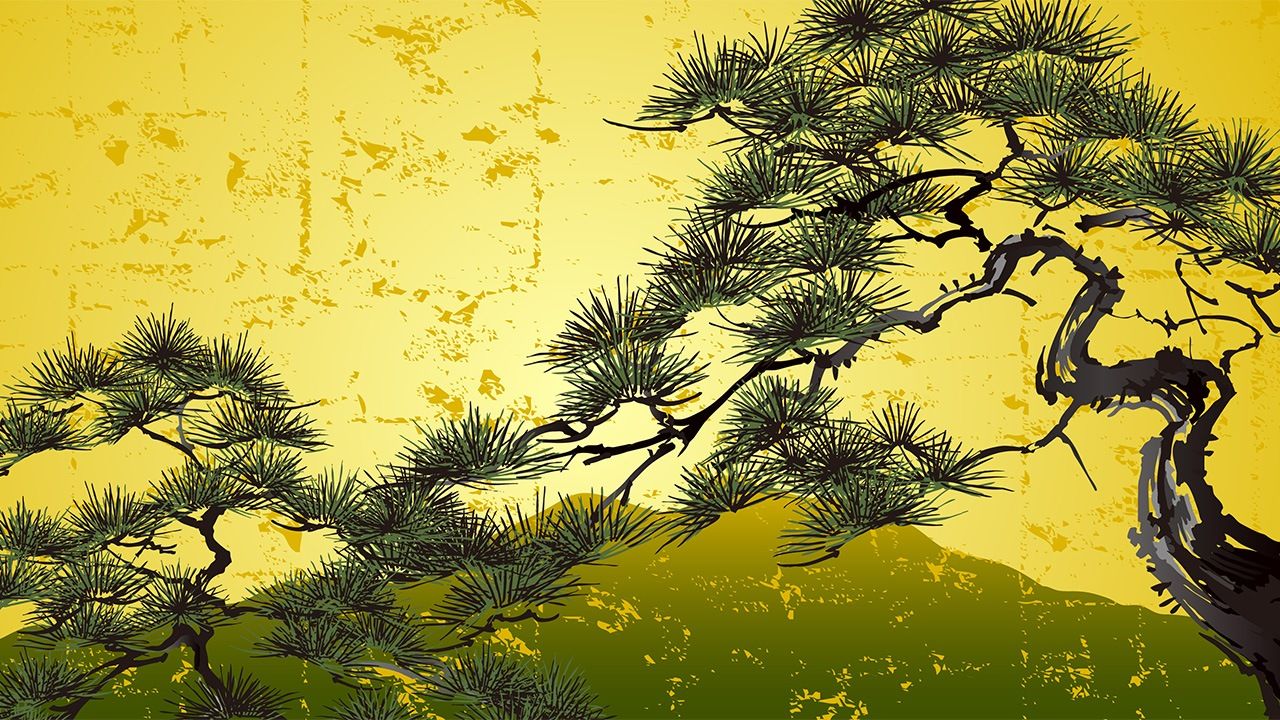
A Journey Through Japanese Haiku
Art in Winter
Culture Environment Lifestyle- English
- 日本語
- 简体字
- 繁體字
- Français
- Español
- العربية
- Русский
金屏の松の古さよ冬籠 芭蕉
Kinbyō no / matsu no furusa yo / fuyugomori
Ancient pine
on a gold leaf screen—
winter seclusion(Poem by Bashō, written in 1693.)
The Japanese word fuyugomori means to isolate oneself at home through the coldest part of winter. According to the preface to the collection Sumidawara (A Sack of Charcoal) in which this poem appears, one winter night in 1693, three of Bashō’s followers visited him at his hermitage and built a fire in his brazier. Bashō murmured the haiku as he rearranged the charcoal with chopsticks.
The poem describes a folding screen, illustrated with an old, broad pine tree, and adorned with gold leaf. As such screens keep away the drafts, they were very welcome furniture while wintering indoors. There was no possibility that this kind of screen could be found at Bashō’s hermitage, however, and he must just have imagined that it would be nice if he had one. How pleasant it would be to get through the freezing temperatures with the warm brightness of gold leaf and the old, faithful pine.
Much earlier, Bashō’s friend Sodō composed the following haiku: Kenkon no / hoka ie mogana / fuyugomori (I want a home / outside this world / to pass the winter). The phrase kenkon no hoka (outside this world) is a reference to a work by the ancient Chinese poet Yuan Zhen in which a mountain wizard has a jar that contains another world he can go to. Bashō may have been thinking of Sodō’s poem in expressing his own wishes for how to spend winter.
(Originally published in Japanese. Banner photo © Pixta.)